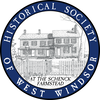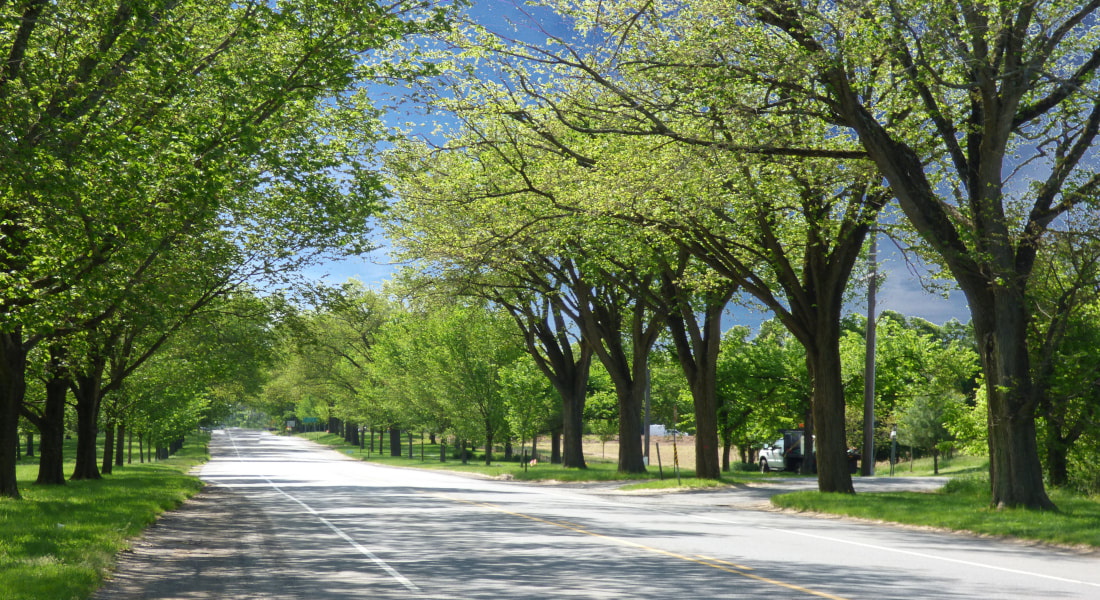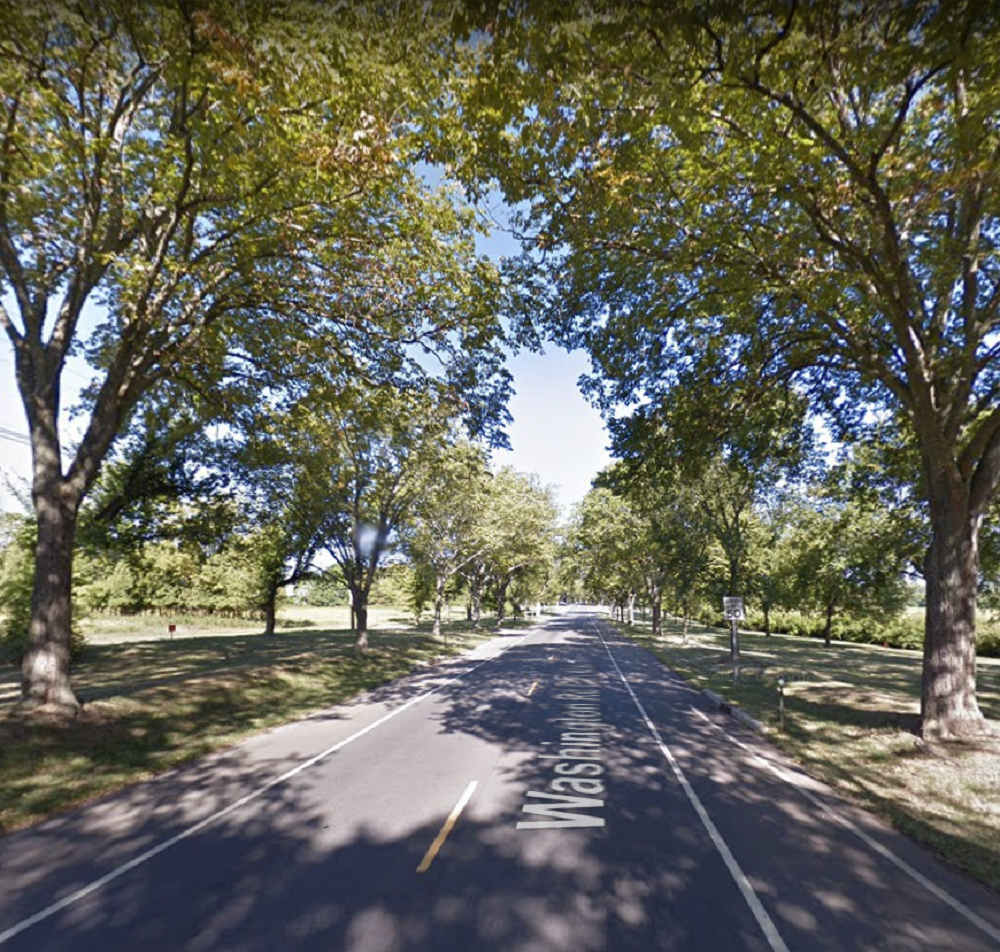Washington Road Elm Allée
Historical Overview
|
Lining either side of Washington Road between Route 1 and the Delaware and Raritan Canal is a picturesque corridor of elm trees. This "Washington Road Elm Allée" is noteworthy as a 1920s-era planned arboreal gateway linking West Windsor and Princeton and is listed on the National Register of Historic Places. It is also a contributing element to the historic West Windsor community of Penns Neck and a member of West Windsor's "100 Club."
Lining streets and roads in cities with trees, of course, was not a new development, even in the 1920s. However, at the time, particular attention was being given to plantings along countryside roadways across the nation, as part of a broader movement to "beautify" public areas outside of cities. Locally, Princeton University, alongside William Flemer II of Princeton Nurseries were proponents of this concept.[1] Around 1920, Flemer cultivated the "Princeton Elm" as a variety of the "American Elm." For generations, elms had populated older colonial towns as stately symbols of history, patriotism, strength, and longevity. Princeton University's campus was no exception. Although it's unknown how many were planted along Washington Road in the first year, there were 136 young elm trees typically spaced about 50 feet apart by the year 1940. As these trees matured, they would eventually develop large spans of branches arcing over Washington Road, creating a "tunnel" effect with dappled light peeking through the canopy.[2] |
|
These trees are also noted for their resilience. In 1930, Dutch Elm disease arrived in the United States and began killing the majority of American Elm populations (hundreds of millions of deaths) across the nation. Despite preservation efforts, Princeton University did not escape this havoc, and the number of elms there dwindled from around 1,000 in 1944 to 238 in 1964. However, the "Princeton Elm" variant that Flemer had cultivated proved especially resilient, with death rates along Washington Road in the single-digits.[3]
However, other factors - age, storms, inconsistent/infrequent feeding and sanitation, stresses from passing automobile traffic, and more - have led to the loss of dozens of the original 136 elms. Yet, dozens of the original plantings still stand at the time of this writing (2023) and a variety of other species have been planted over the decades, notably Norway Maples (1960s), forsythia (probably 1960s), Delaware Elms (1983), Liberty Elms (1990s).[4] Over the decades, the vast majority of shade tree allées along open public roads have disappeared or declined significantly. However, despite many changes over the decades, the Washington Road Elm Allée remains a particularly well-preserved collection of horticulturally and scientifically significant specimens. In fact, it was listed on the National Register of Historic Places in 1999. It is also one of the last and the most extensive surviving elm corridors lining a public roadway in New Jersey, and a superb example of early 20th century attempts to beautify the American landscape.[5] |
Bibliography
- Hand, Susanne C. “National Register of Historic Places Registration Form - Washington Road Elm Allee.” Princeton, New Jersey, June 30, 1998. Entered into the National Historic Register on January 4, 1999.
- Ibid.
- Ibid.
- Ibid.
- Ibid.





